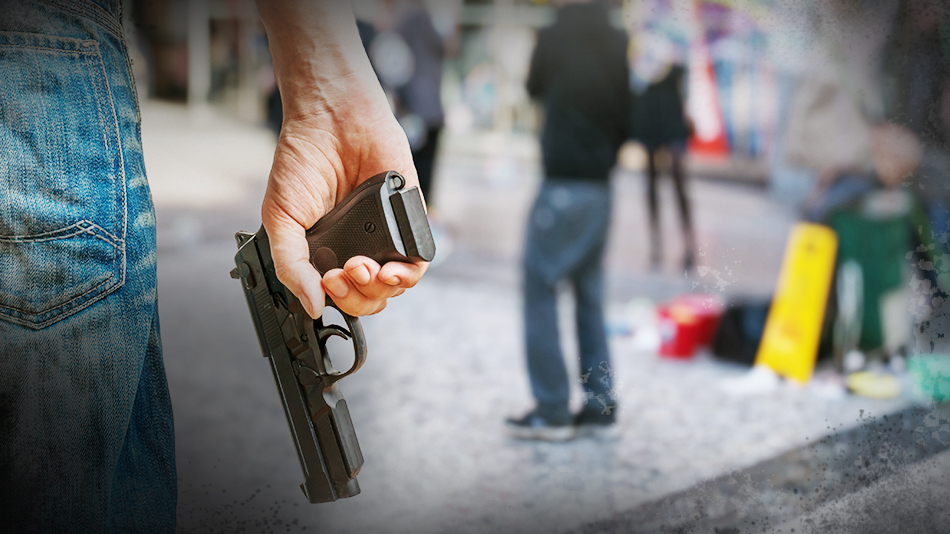The following is a video transcript.
There are three common questions Independent Program Attorneys frequently answer at Gun Law Seminars in Florida. This video will dispel some common myths that people believe exist in regard to firearms under Florida law.
Myth Number One: The 3-Step Rule
Let’s start with the 3-Step Rule. It is possible that some states have a 3-Step Rule which allows those without a carry license to keep a firearm in their car. Typically, a 3-Step Rule is just that. The ability to fire a firearm is three steps away.
An example of the 3-Step Rule would be: step one, your gun is unloaded. Step two, your gun is in a closed case, or in a holster with the snapping, or buckling retention strap. Step three, your gun is in the case, or holster, and is then put into the glove box, or center console. To be clear, Florida does not now, nor has it ever had a 3-Step Rule.
Florida law regarding carrying a firearm in your car without a CWFL is found in Florida Statute 790.25 Subsection Five, entitled, “Possession In A Private Conveyance,” which in relevant part reads, “It is lawful for a person 18 years of age or older to possess a concealed firearm or other weapon for self-defense or other lawful purpose within the interior of a private conveyance, without a license, if the firearm or other weapon is securely encased or is otherwise not readily accessible for immediate use.”
To be securely encased, all that is required is that the firearm unit is placed in a closed container, such as the glove box or center console of the car. A firearm cannot be placed loosely under a seat or between the seat and center console.
Myth Number Two: The 21-Foot Rule
The next myth that has no basis in Florida law is the 21-Foot Rule. Many people believe if you are being threatened by a person with a deadly weapon (other than a firearm), that the person must be within 21 feet of you before you have the right to defend yourself.
There is simply no basis in the law for this belief. Florida law does not specify a distance between parties before one gains the right to defend themselves using deadly force.
Florida law allows a person to defend themselves with deadly force for several reasons, including when he or she reasonably believes that the use or threatened use of such force is necessary to prevent imminent death, or great bodily harm to himself, or herself, or another person. A jury may look at the distance between the parties as one aspect of whether or not the shooting was reasonable. Might a jury find that it was unreasonable to believe that deadly force was necessary to prevent injury or death when the assailant was 300 feet away, yelling threats, and carrying a knife? Maybe. But the point is that the defender would not by law have to wait until the assailant was within 21 feet of them to defend themselves.
Myth Number Three: The Warning Shot Law
The final myth that we will discuss today is the belief that Florida has a warning shot law. It does not.
There is no law that gives anyone the authority to fire a warning shot, and the term warning shot is not found anywhere in Florida law. In fact, firing a warning shot may be a ticket to prison. Under Florida law, the firing of a handgun—or long gun—is use of deadly force. Only when threatened with, or when actually responding to the use of deadly force against yourself, do you have the right to use deadly force.
If someone yells at you and threatens to beat you up, and approaches you with empty hands, you may have a right to display a firearm, which by law is the use of force. But if they step closer to you instead of stopping and you fire a warning shot, you have just upped the level of force to deadly force, and likely broken the law.
Even if you are pointing your firearm straight down at your side, or if the firearm discharges accidentally as you pull it from the holster, Florida law will hold that you have used deadly force.
If you are in a situation where you did not have the right to use deadly force, then the accidental discharge or intentional firing of a warning shot could land you in jail.





so “If someone yells at you and threatens to beat you up, and approaches you with empty hands, you may have a right to display a firearm, which by law is the use of force. But if they step closer to you instead of stopping” in this case, not firing warning shot, what can one do? someone come after me, try to grap me, without a gun, how do I defend myself?
Outstanding information. Thank you for making it easy to understand.
I have a CWP and I’m not concerned about the personal vehicle question. However, the encased description clears up a lot of confusion for those who don’t. Thanks!
Elisabeth Li. Asks a good and obvious question to your article. I think a good public response would be very helpful to all.
US LAWSHIELD says “you’re the guys” as local counsel if I discharge my weapon.
I’m wondering, I use a 22 round extended clip, how does law enforcement view my desire to have more than a factory clip ?
I’m impressed with your devotion to firearm related law.
First of all there is no such thing as 22 round extended clip. Florida has no magazine capacity limits in pistols, shotguns, and rifles. I suggest you do research on Florida State gun laws if you’re going to be a gun owner.
First of all there is no such thing as 22 round extended clip. Florida has no magazine capacity limits in pistols, shotguns, and rifles. I suggest you do research on Florida State gun laws if you’re going to be a gun owner.
Someone breaks into my house at 3am. Can I shot them?